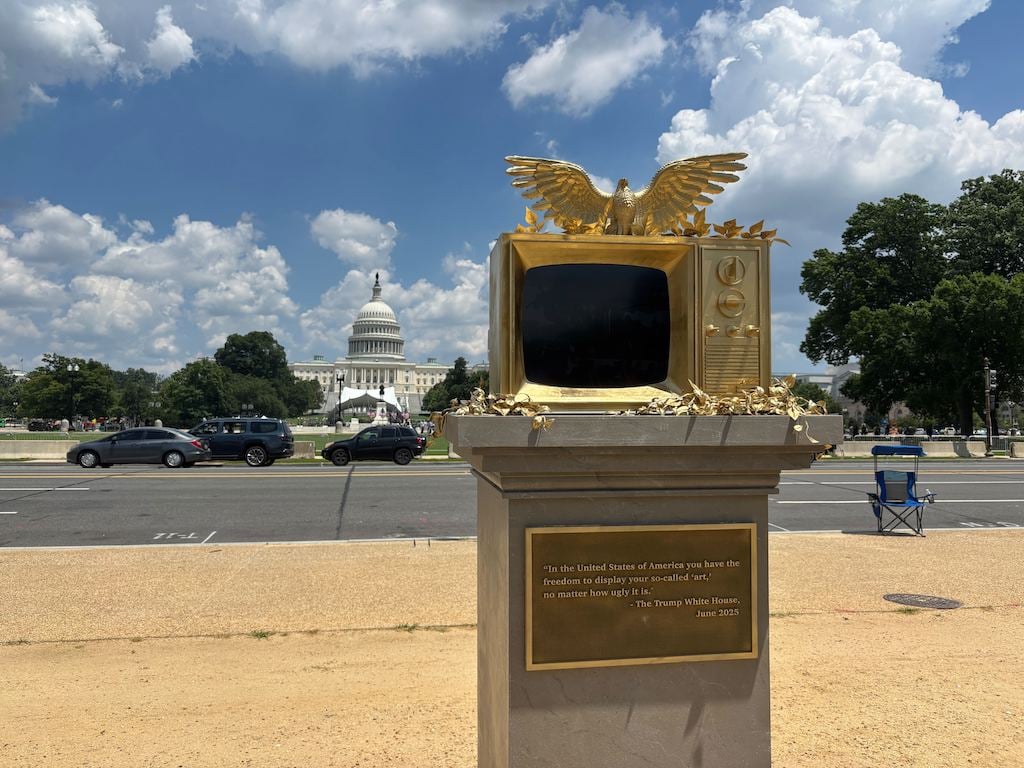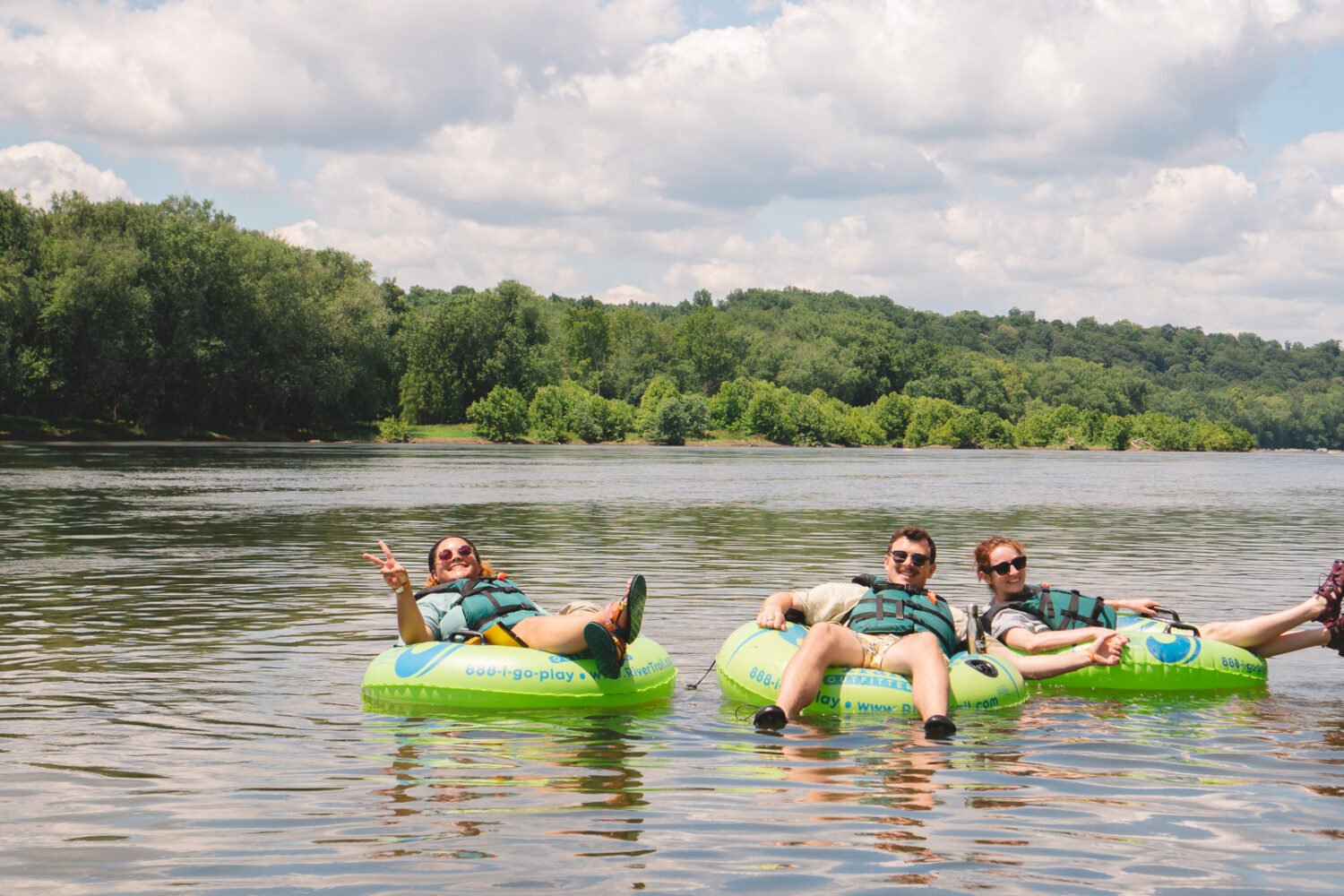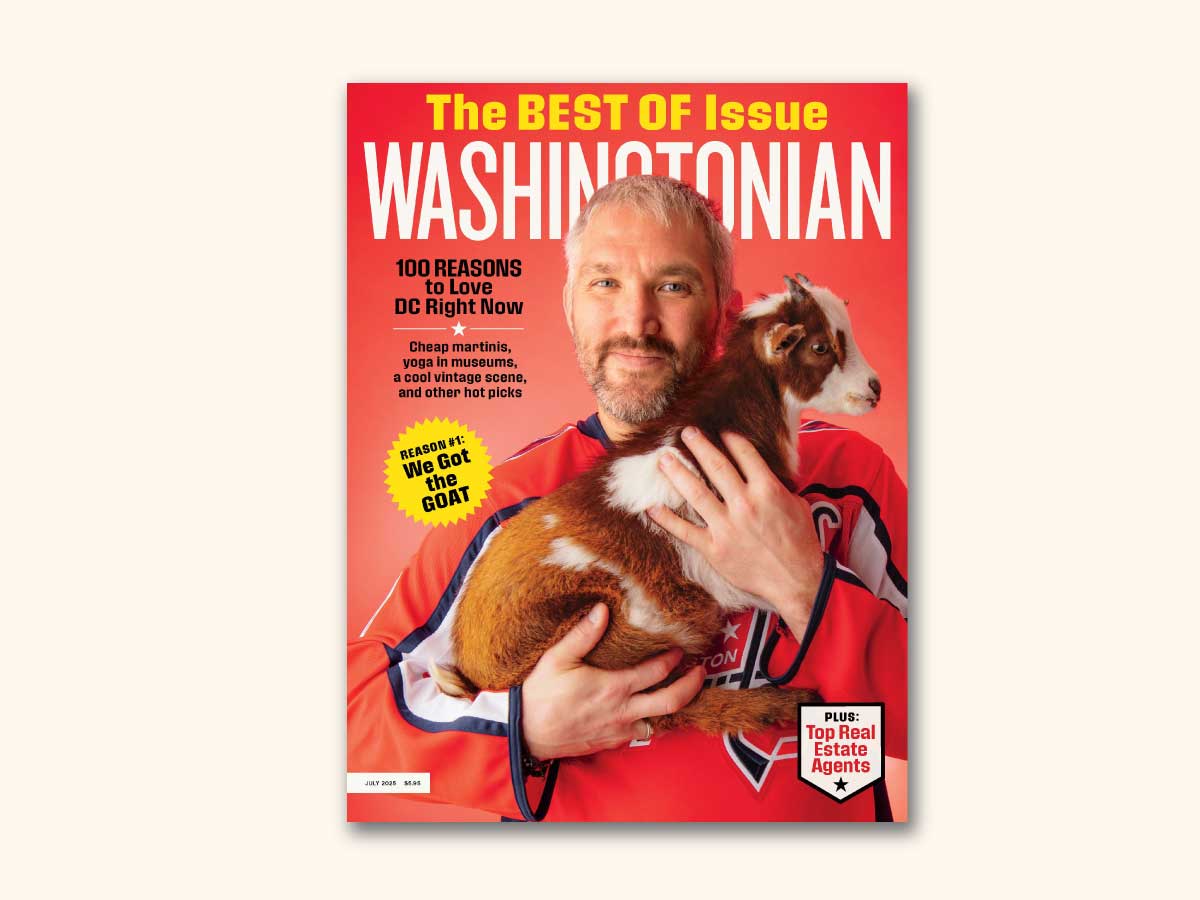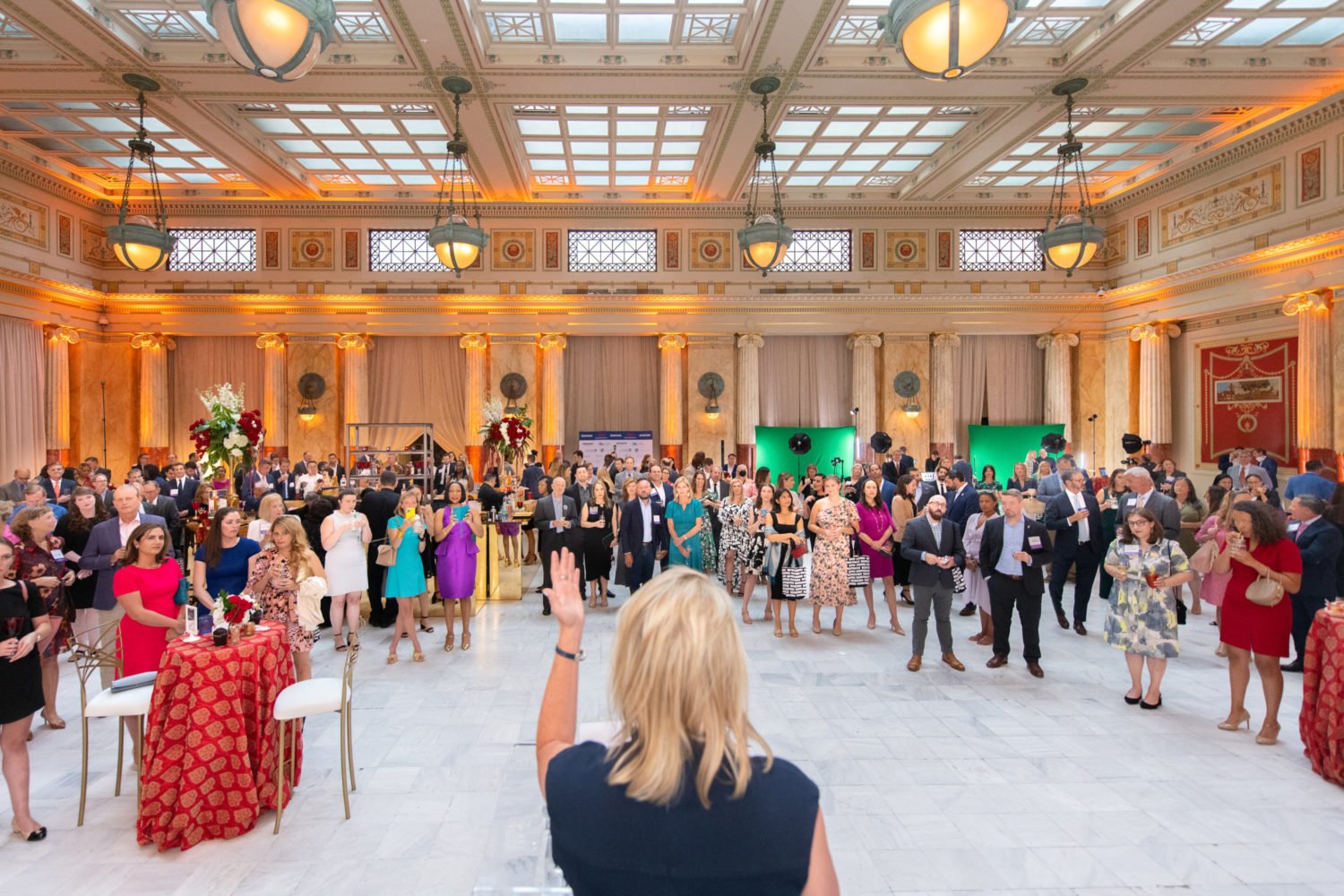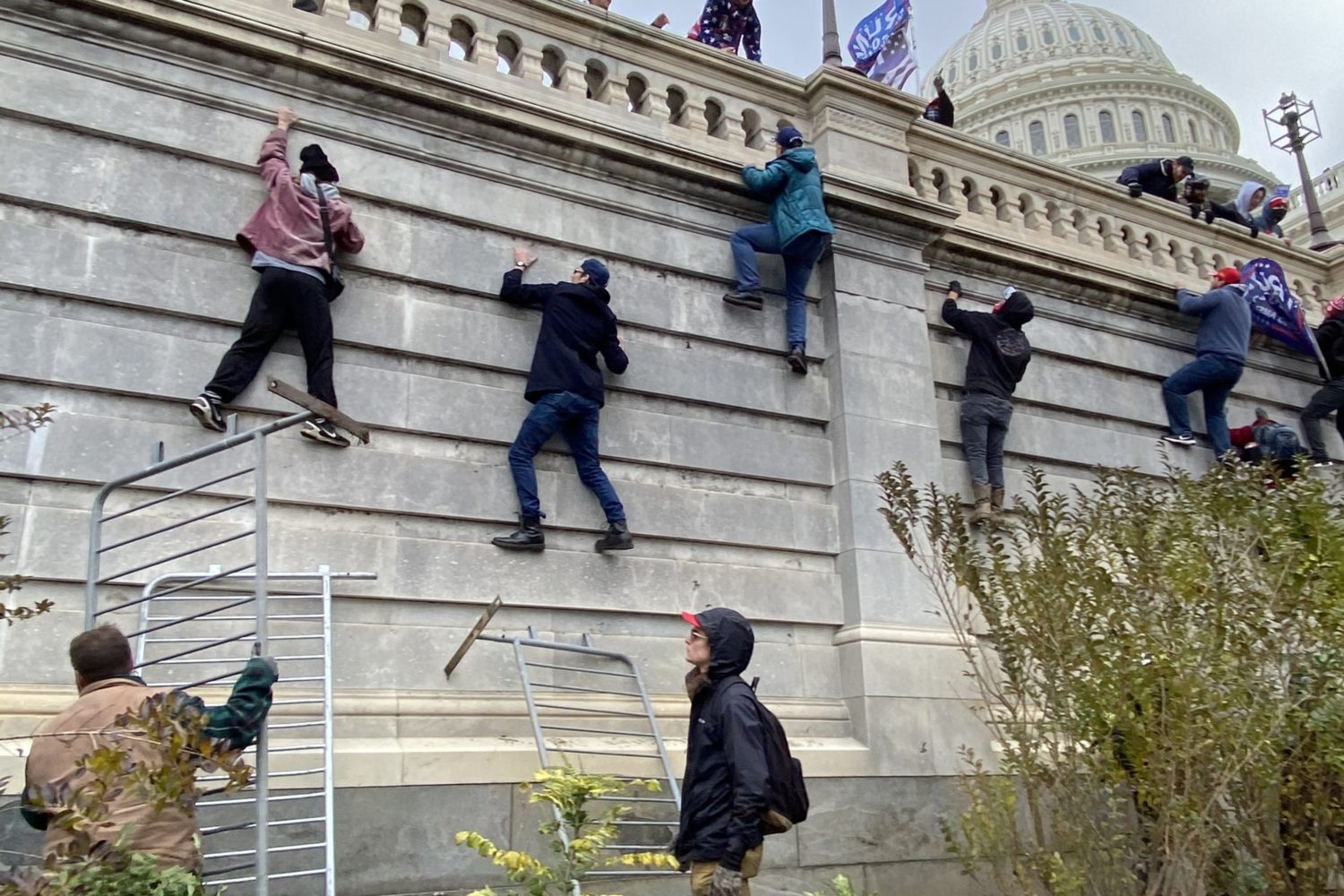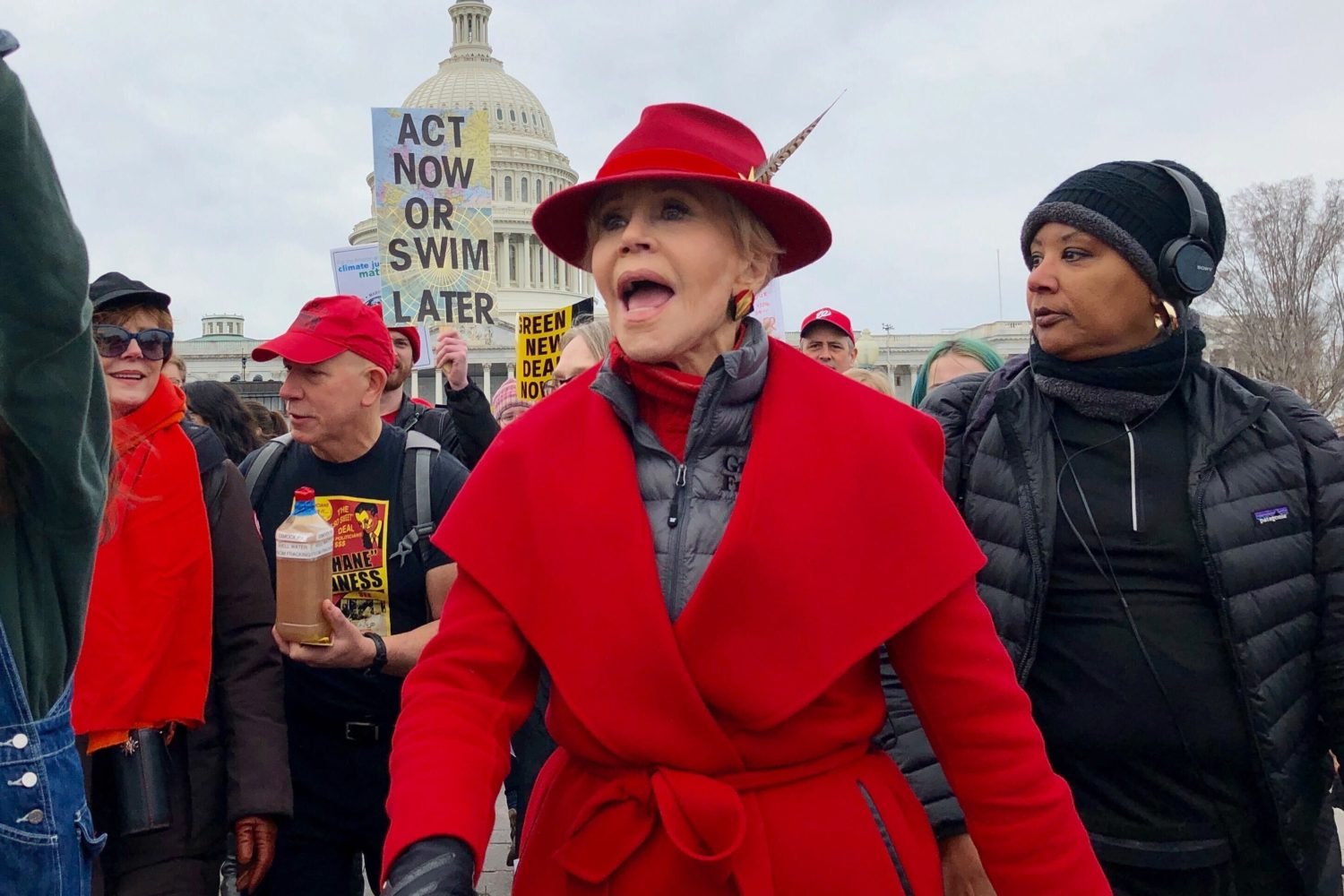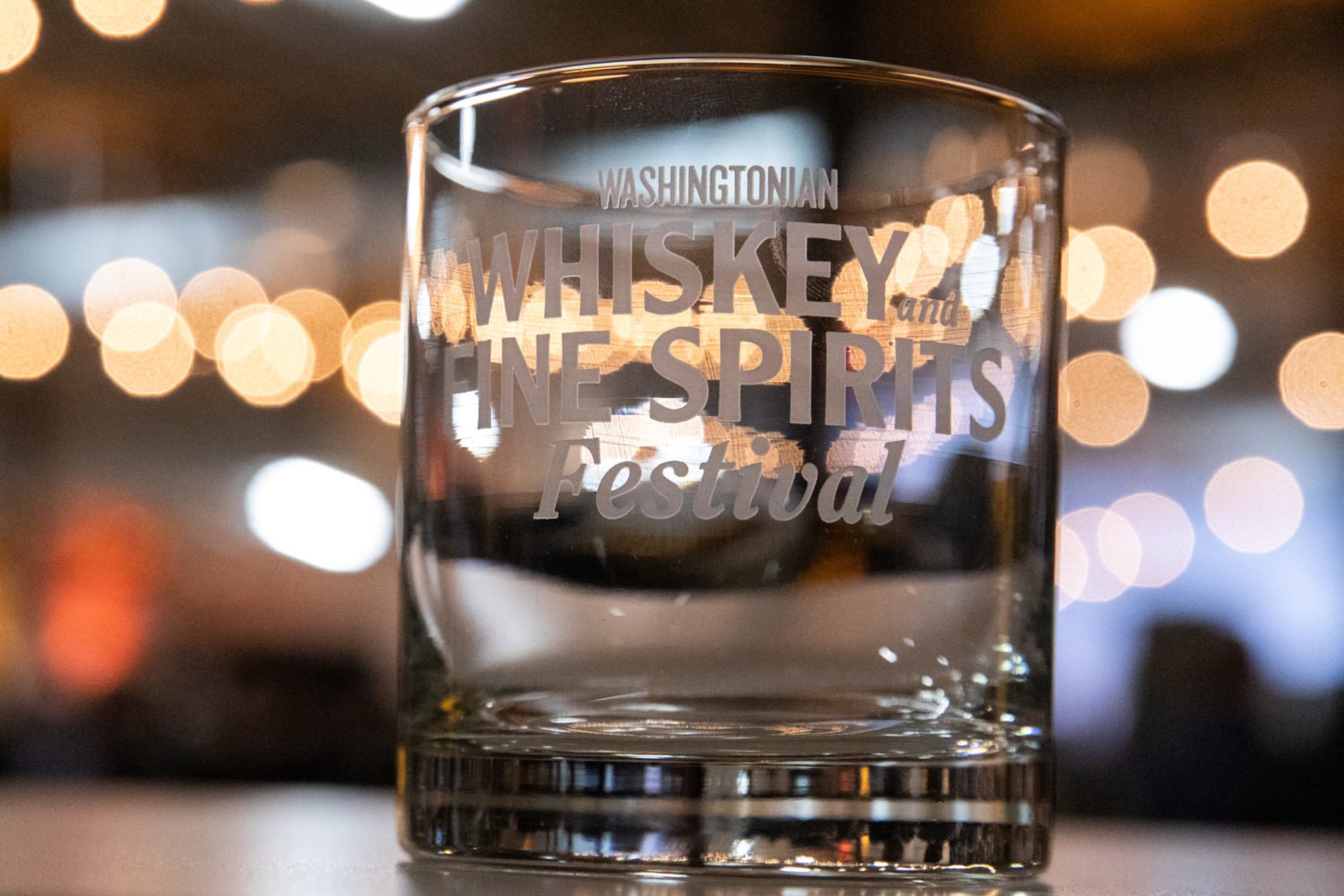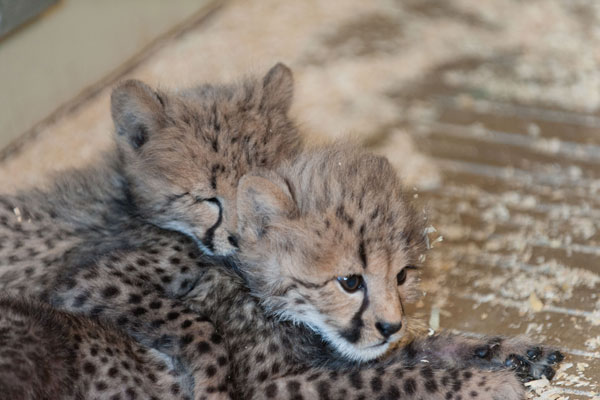
The cheetah cubs, one male, one female, were born in April. One was delivered naturally, the other by C-section, and they started their lives in intensive care. They are now off bottle feeding and doing well. The female is sometimes the more active of the two, pouncing on her brother. They will go on public view later in the summer. Photograph by Andrew Propp.
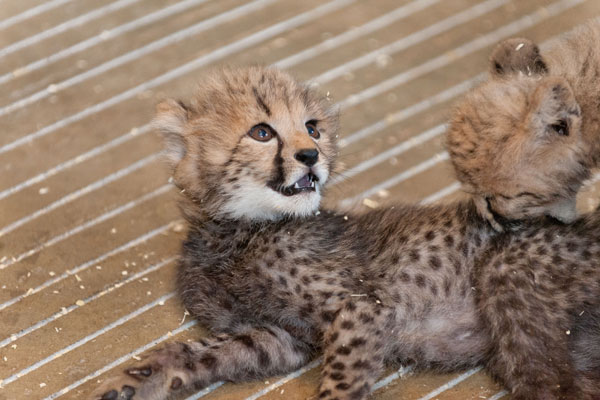
One of the two cheetah cubs at the National Zoo, having a little roll around after a midday meal of special feed that includes supplements, nutrients and a beef-like product called Natural Balance. Photograph by Andrew Propp.
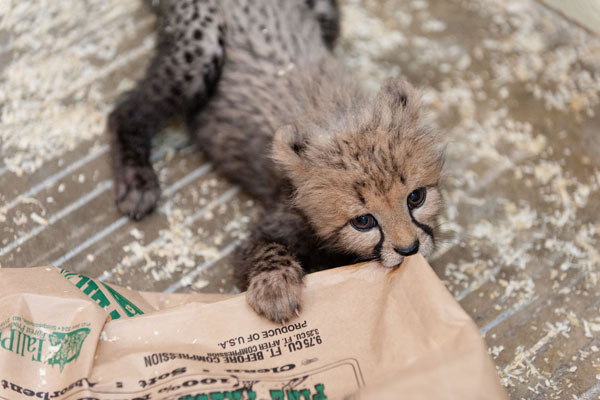
The cheetah cubs playfully attack a paper bag, but watching them it’s easy to see how the instincts come naturally for devouring prey. Photograph by Andrew Propp.
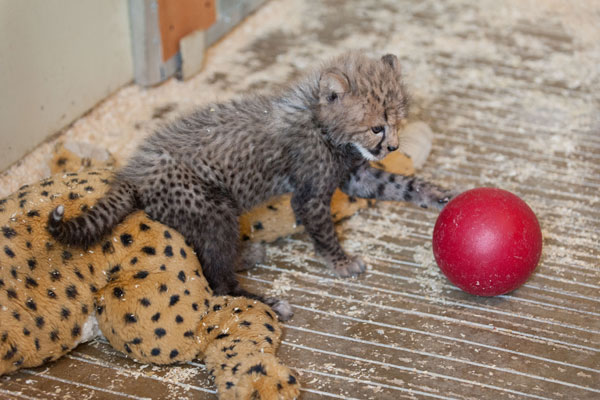
The large stuffed cheetah serves as the cubs’ mock mother, and they do like to stay near to it, curl up on it, and sometimes chew on it. The red ball is quite popular. Photograph by Andrew Propp.
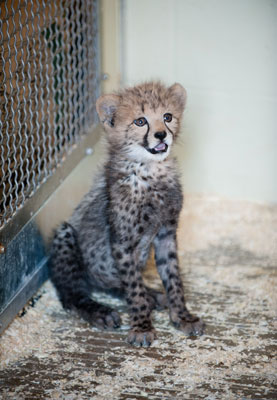
One look at the size of the paws and it is easy to tell how this now 7-pound baby will eventually grow to weigh more than 70 pounds and be the world’s fastest land animal. Photograph by Andrew Propp.
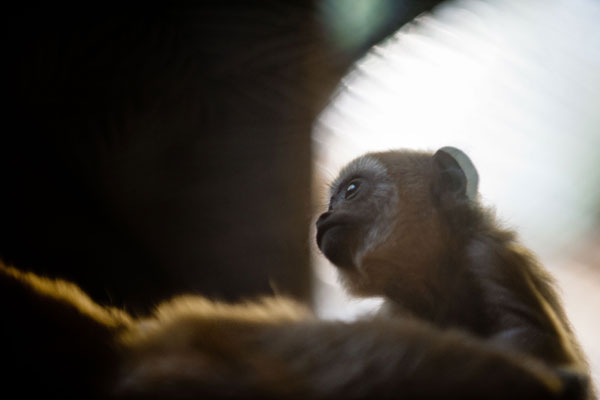
The baby howler monkey sitting on his mother’s back. He still clings to her most of the time. Through Facebook the public is selecting his name, which will be announced on Friday, June 22. At last check, the frontrunner was Loki. Photograph by Andrew Propp.
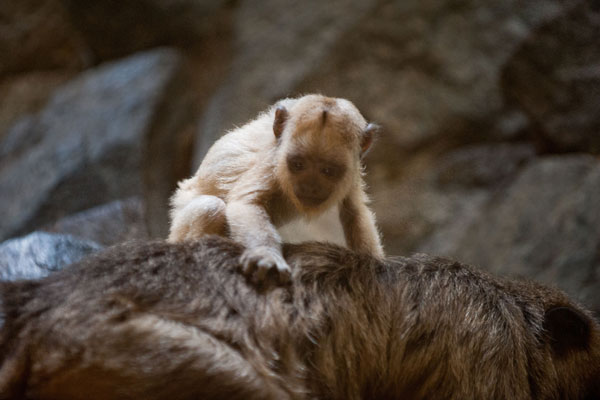
The baby howler lives in a two-room glass-enclosed cage with his mother and father. The whole family is on public display, and they are entertaining. Photograph by Andrew Propp.
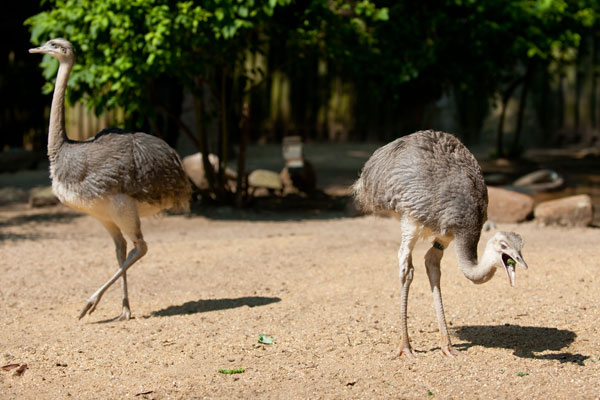
Rhea chicks enjoy a mid-morning snack of shredded kale. Photograph by Andrew Propp.
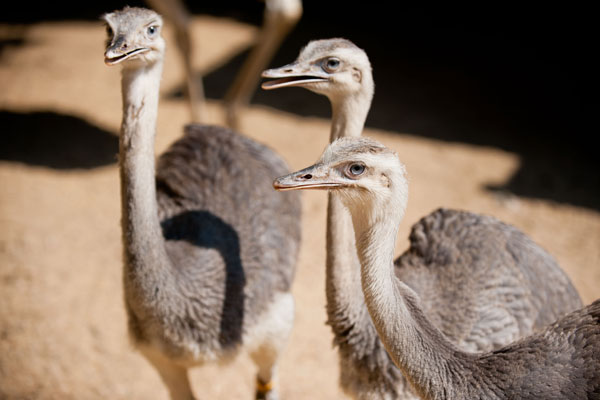
The National Zoo’s three rhea chicks. They were hatched by their mother but, typical to this species, are raised by their father. Photograph by Andrew Propp.
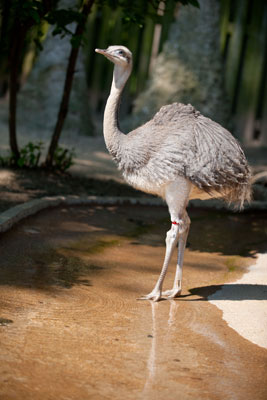
A rhea chick cools off. The red mark on the leg is banding put there by the zoo. Photograph by Andrew Propp.
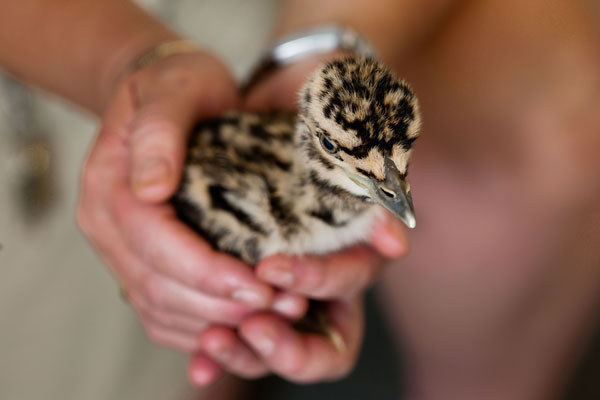
A kori bustard chick. It will become one of the heaviest flying birds in the world, weighing around 35 pounds. Photograph by Andrew Propp.
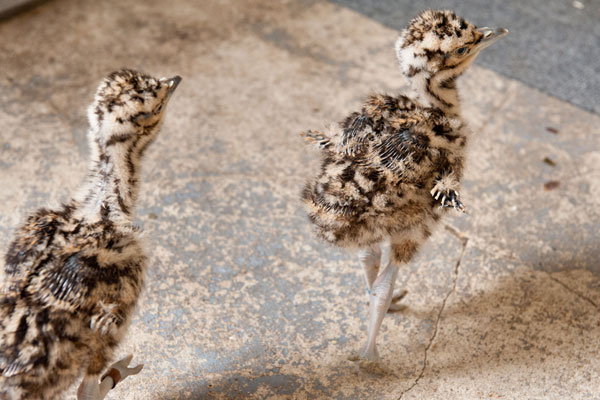
The kori bustard chicks were hatched. Photograph by Andrew Propp.
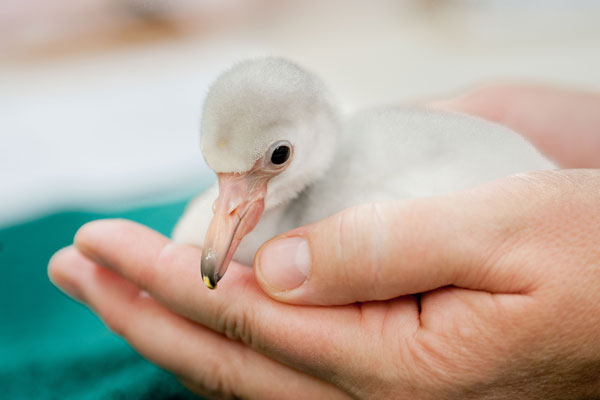
A newly hatched flamingo. Its feathers feel like dense, soft cotton. At the moment it is fed by hand. Photograph by Andrew Propp.
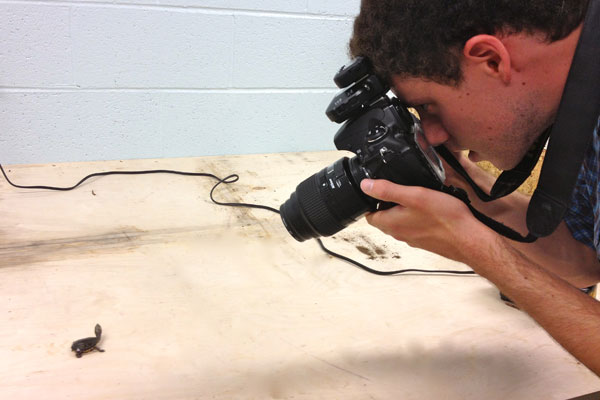
Photographer Andrew Propp zooms in close on a baby snakehead turtle, which seems quite calm about the moment. Photograph by Carol Ross Joynt.
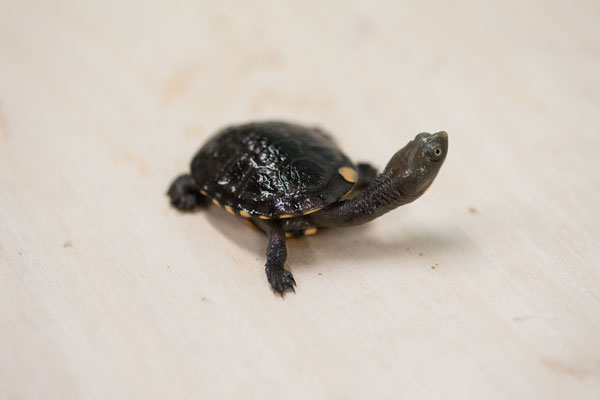
The result of Andrew Propp’s close-up photo. This baby snakehead turtle, hatched June 5, is what zoo officials call a “happy accident.” Photograph by Andrew Propp.
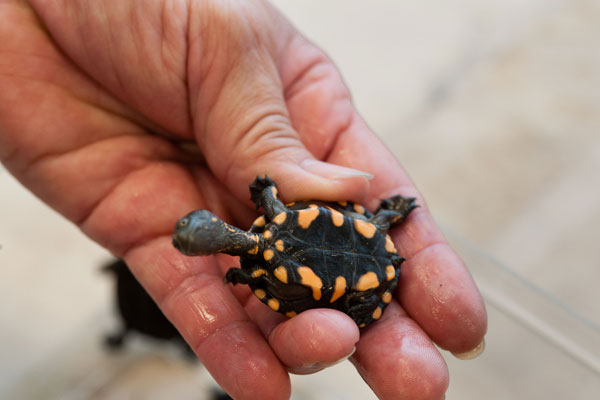
The pretty undermarkings of the baby snakehead turtle. It will grow to many times its infant size. Photograph by Andrew Propp.
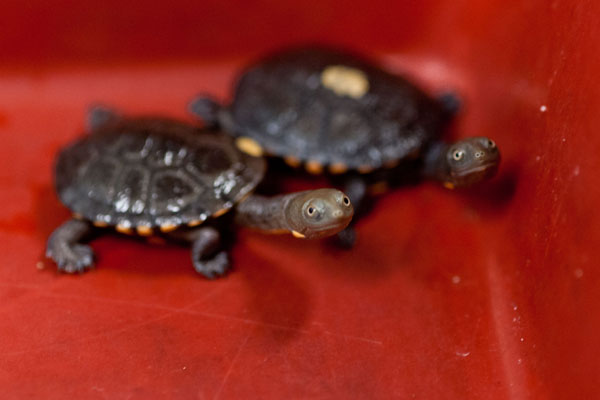
Two of the four baby snakehead turtles at the National Zoo. They were hatched two and a half weeks ago. Photograph by Andrew Propp.
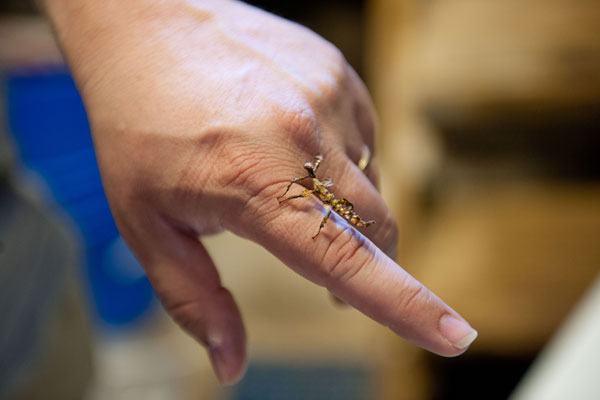
A baby spiny stick insect. It will grow to be four or five inches long. Photograph by Andrew Propp.
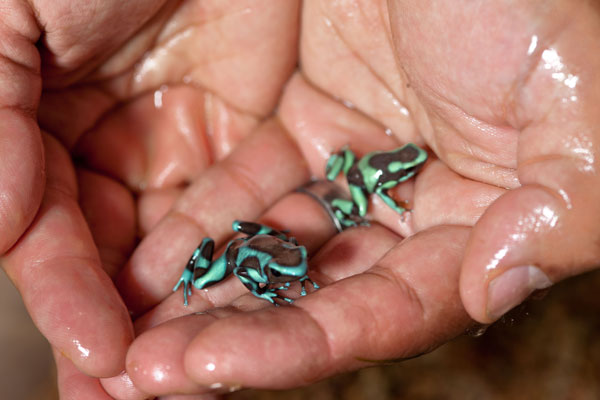
Two tiny black and green poison dart frog, what a zoo senior curator calls the “guppies” of frogdom. Photograph by Andrew Propp.
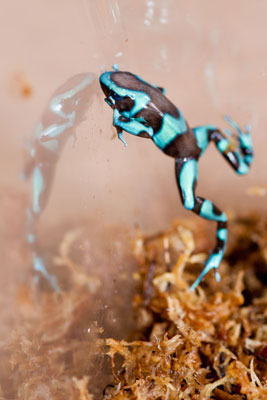
Leaping about, a black and green poison dart froglet. Photograph by Andrew Propp.
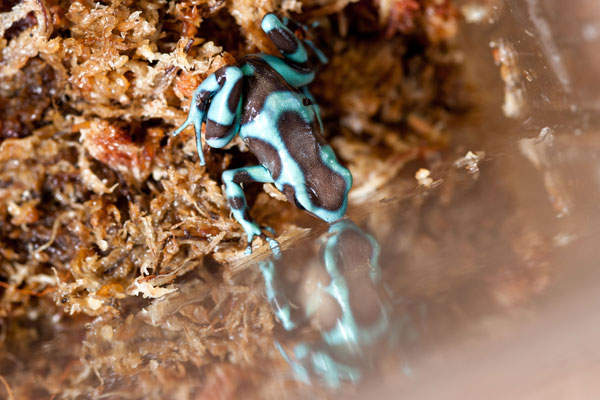
Enjoying its own beautiful reflection, a black and green baby poison dart frog. They are not poisonous in captivity, due to diet. Photograph by Andrew Propp.



